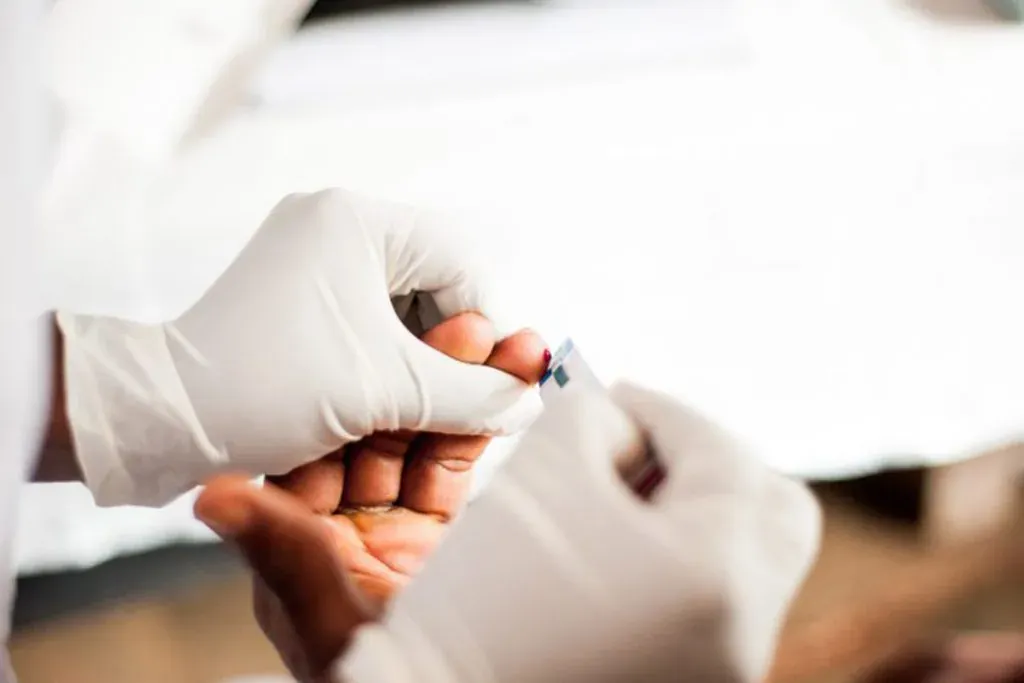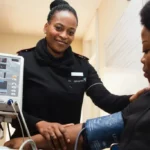HIV (Human Immunodeficiency Virus) is a virus that destroys the body’s immunity. Every human is made up of cells called leukocytes.
These leukocytes also known as white blood cells form our defense against organisms that invade our blood stream.
When a body has been infiltrated by HIV, it lodges in its white cells and then replicates itself in large numbers to mount an immune attack on other parts of the body.
HIV is commonly mistaken as AIDS. However, AIDS is the long term complication of HIV. If HIV is not diagnosed early or it is diagnosed but poorly managed, it could result in AIDS.
You may present to your primary healthcare provider with symptoms such as fever, chills, rash, night sweat, headache, sore throat, swollen lymph nodes, and persistent fatigue.
These symptoms are quite consistent with HIV but it could be something else.
Your doctor will prescribe a number of tests for you, including HIV tests.
These tests will help in evaluating possible causes and making a diagnosis.
What is an HIV screening test?
This is a test that tells you your HIV status. HIV screening can otherwise be called a retroviral test.
There are two possible outcomes of this screening; positive or negative status.
If a person is negative, this means there is no HIV in their system.
On the other hand, a positive result indicates the presence of HIV in the bloodstream.
TYPES OF HIV TEST TO CONFIRM DIAGNOSIS
There are three main types of diagnostic test used in the detection of the virus.
They include Nucleic Acid Tests (NAT), HIV antibody tests, and HIV antigen/antibody tests.
They find the virus in the blood by applying different techniques.
Nucleic Acid Tests
This is also known as an HIV antigen test or HIV viral load.
It looks for the presence of the virus itself, particularly p24 antigen.
This makes it very useful in initial diagnosis.
In addition to that, it is used to measure the amount of HIV virus in the body.
Because of this, it is the test best suited for monitoring viral growth in persons who have been infected with the virus.
It is used as a marker to determine how effective their medications are and to know whether the dose should be increased or the drug type be changed entirely.
This technique is the most direct and yields fast results.
HIV Antibody Test
This test type searches for HIV antibodies in the sample.
These antibodies are produced as a form of defensive response to invasion of the body by disease agents.
If a pathogen infects the body, the body forms some proteins to ward off the infection.
Even if the infection is resolved, its antibodies would remain.
This same thing happens when the HIV virus attacks the body except it cannot be cured.
An antibody test looks for the body’s response to the virus, not the virus exactly.
The problem with this technique is that it may not diagnose the disease early enough.
This is because it takes about 3 weeks for the body to produce antibodies and up to 8–15 weeks before the antibodies are adequately detectable.
This test is not ideal for early stage infection.
HIV Antigen/Antibody Test
As the name implies, it is a type of test that looks for both antigens and antibodies in the sample.
The test is increasingly being applied in the diagnosis of HIV because it measures both the virus and the immune response it triggers.
This combination technology grants it more accuracy than the other two types.
TEST to CONFIRM A DIAGNOSIS OF HIV
There are two types of the virus namely HIV-1 and HIV-2. HIV-1 is more infectious and is found in about 95% of people with HIV.
On the other hand, HIV-2 is the less common and less infectious type, affecting only 5% of people.
Once the diagnosis of HIV has been established, the next step is to confirm which HIV type it is. This will determine the treatment course to take.
The vast difference in genetic makeup of the virus types means that the general diagnostic test is not capable of discovering what virus type the person has.
Similarly, an HIV-2 test cannot detect HIV-1.
The ideal test for HIV type confirmation is the HIV-1/HIV-2 Differentiation Immunoassay which is based on antigen-antibody combination test.
WHO SHOULD TAKE AN HIV TEST
For people between ages 13 and 65, it is required they are tested for HIV once a year at least. The frequency of testing should be more for the following group of people.
- People who share sharp objects with others
- People having unprotected sex with men and women
- Pregnant women
- People who have been diagnosed of other STDs.
WHAT TO EXPECT DURING AN HIV SCREENING
Retroviral screening can be of two types; rapid and standard test.
While standard or conventional tests are performed in a lab, Rapid Diagnostic Test (RDT) can be done anywhere.
Most RDTs are based on antibody tests but some are also based on antigen/antibody combination tests.
The advantage of RDTs is that they deliver results in a few minutes.
HIV tests are carried out on blood or saliva.
Although rare, it is sometimes performed on urine.
Blood sample collection could be with the use of needles to draw blood or sterile lancet to prick your finger.
It all depends on the amount of blood needed for the test.
The risks involved include the pain with needle insertion and slight bruising which goes away with little time.
There is specific preparation or precaution to observe when going for an HIV test.
However, you can ask your doctor questions that may bother you.
For retroviral tests that require buccal swabs for oral tissue and fluid, there are safe home kits designed to show you results within 15-20 minutes.
Not testing is not an option. It helps to know your status.
You can order a HIV-1/HIV-2 test from Healthtracka and experience hassle-free testing.
Book for a test here.




